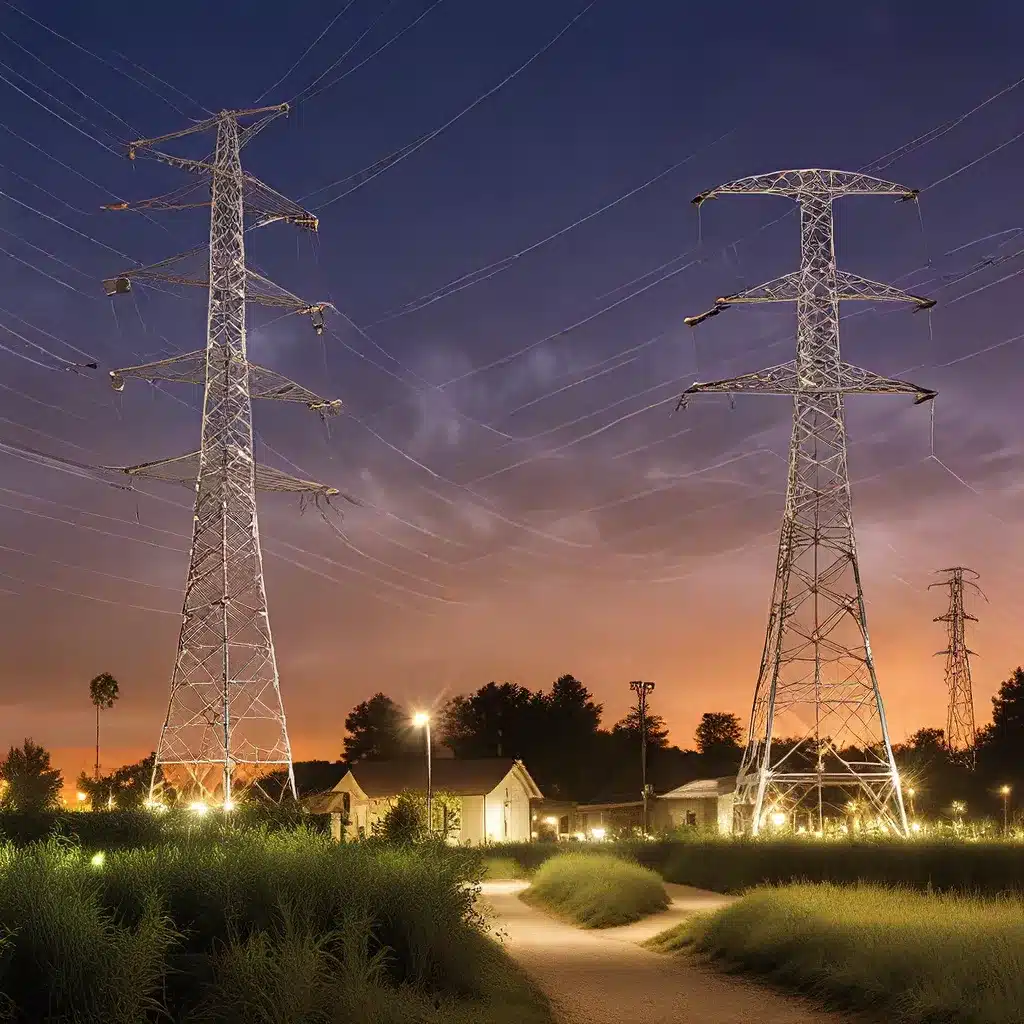
Overcoming the Energy Challenge in Sensor Networks
As the Internet of Things (IoT) and sensor network technologies continue to evolve, the demand for reliable, efficient, and sustainable power sources has become increasingly critical. Traditional battery-powered sensor nodes have limited lifetimes and require regular maintenance, which can be impractical or even infeasible in many remote or inaccessible deployment scenarios. To address these challenges, researchers and engineers have been exploring innovative solutions in the realm of energy harvesting, unlocking new possibilities for powering the sensor networks of the future.
Energy harvesting refers to the process of capturing and converting ambient energy sources, such as solar, thermal, kinetic, or radio frequency (RF) into usable electrical energy. This approach holds immense potential for transforming the way sensor networks are powered, enabling autonomous, self-sustaining operations and reducing the need for manual battery replacements or recharging. By harnessing the abundant renewable energy available in the environment, sensor networks can operate for extended periods, opening up a wide range of applications in fields like environmental monitoring, smart cities, industrial automation, and healthcare.
Advances in Energy Harvesting Technologies
The development of energy harvesting technologies has been a key focus for researchers and technology companies alike, leading to a surge of innovative solutions tailored for sensor network applications. These advancements span various energy transducer technologies, power management circuits, and energy storage systems, all working in harmony to maximize the efficiency and reliability of energy-harvesting sensor nodes.
Cutting-edge research has explored the use of piezoelectric, thermoelectric, and photovoltaic materials to convert mechanical, thermal, and solar energy, respectively, into electrical energy. These transducers can be integrated directly into sensor nodes, enabling them to harvest energy from their surrounding environment and power their operations without the need for external power sources.
In parallel, advancements in power management and energy storage have played a crucial role in optimizing the efficiency of energy harvesting systems. Sophisticated power conditioning circuits and energy storage devices, such as supercapacitors and thin-film batteries, have been developed to efficiently capture, regulate, and store the harvested energy for seamless, uninterrupted sensor node operation.
Emerging Applications and Challenges
The ability to power sensor networks through energy harvesting has unlocked a myriad of exciting applications across various industries. In the realm of environmental monitoring, self-powered sensor nodes can be deployed in remote locations to gather data on climate, air quality, water resources, and wildlife without the need for external power sources. This has enabled the expansion of sensor networks into previously inaccessible areas, providing valuable insights that can inform conservation efforts and resource management.
In the smart cities domain, energy-harvesting sensor nodes can be integrated into infrastructure, such as street lights, traffic signals, and building systems, to monitor and optimize energy consumption, traffic flow, and environmental conditions. By leveraging the renewable energy available in their surroundings, these sensor nodes can operate autonomously, reducing maintenance costs and contributing to the sustainability of urban environments.
The industrial automation sector has also embraced energy harvesting, with sensor nodes being deployed to monitor the performance and condition of machinery, equipment, and processes. This self-powering capability enables the deployment of sensor networks in challenging, hard-to-reach locations within manufacturing facilities, improving operational efficiency, predictive maintenance, and asset management.
Despite these promising advancements, the integration of energy harvesting technologies into sensor networks is not without its challenges. Factors such as environmental conditions, power output variability, and energy storage limitations can impact the reliability and consistency of the harvested energy. Addressing these challenges through innovative power management strategies, adaptive algorithms, and enhanced energy storage solutions will be crucial for unlocking the full potential of energy-harvesting sensor networks.
Securing Energy-Harvesting Sensor Networks
As sensor networks become increasingly ubiquitous and interconnected, the security of these systems has emerged as a critical concern. The decentralized nature of energy-harvesting sensor nodes, coupled with their limited computational resources, poses unique vulnerabilities that must be addressed to ensure the integrity and confidentiality of the data they collect and transmit.
Researchers have been exploring various security protocols and encryption techniques tailored for energy-harvesting sensor networks. Lightweight cryptographic algorithms, authentication mechanisms, and secure communication protocols have been developed to provide robust data protection while minimizing the energy consumption of the sensor nodes.
Additionally, anomaly detection and intrusion prevention strategies have been implemented to identify and mitigate potential cyber threats, such as eavesdropping, node compromise, and denial-of-service attacks. These measures aim to ensure the resilience of energy-harvesting sensor networks, safeguarding critical industrial, infrastructure, and environmental applications.
Towards a Sustainable Future with Energy-Harvesting Sensor Networks
As the Internet of Things and sensor network technologies continue to evolve, the integration of energy harvesting has emerged as a vital component in realizing a more sustainable and autonomous future. By harnessing the abundant renewable energy available in the environment, sensor networks can operate self-sufficiently, reducing the reliance on traditional battery-powered systems and the associated maintenance and environmental concerns.
The advancements in energy transducer technologies, power management, and energy storage have paved the way for the widespread adoption of energy-harvesting sensor networks across diverse industries. From environmental monitoring and smart cities to industrial automation and healthcare, these self-powered sensor systems are poised to transform the way we collect, analyze, and utilize real-time data, ultimately contributing to a more sustainable and technologically advanced future.
As the field of sensor networks and IoT continues to evolve, the integration of energy harvesting will be a critical enabler in driving innovation, efficiency, and environmental responsibility. By embracing these cutting-edge technologies, we can unlock new possibilities, empower data-driven decision-making, and shape a future where sensor networks are truly self-sustaining and resilient.
To explore the latest developments and applications in the world of sensor networks and IoT, visit sensor-networks.org, the leading resource for professionals, researchers, and enthusiasts in this dynamic field.